Congressional Intelligence and Armed Services Committees Advance New Measures to Probe for Possible Hidden UFO Data

By Douglas Dean Johnson
@ddeanjohnson on Twitter
July 14, 2022
(To receive articles such as this for free by email as soon as they are published, click the "Subscribe" button and enter your email address. My gmail address is my full name, with periods on each side of "Dean.")
Building on the December 2021 enactment of the unprecedented Gillibrand-Rubio-Gallego law dealing with unidentified aerial phenomena (UAP, or UFOs), the congressional armed services and intelligence committees are now pushing forward with new legislative requirements to press the Department of Defense and Intelligence Community to accelerate their so-far sluggish implementation of the 2021 law. The new proposals also contain an array of mechanisms to probe for hidden or forgotten data on UFOs (AKA "unidentified aerospace-undersea phenomena," UAP) that government components or contractors may have gathered since 1947.
WASHINGTON, D.C. (July 14, 2022, 10 PM EDT. Updated October 12, 2022, 10 AM EDT.) – Members of the U.S. Senate committees on intelligence and armed services are pressing forward with multi-pronged new legislation to expand searches for government-held data on UFOs – proposals that reflect the lawmakers' deep dissatisfaction with the sluggish response of the Department of Defense and the Intelligence Community to enactment of the sweeping Gillibrand-Rubio-Gallego UFO law in December, 2021.
Defense and intelligence authorization bills that are now advancing in Congress would create multiple new mechanisms to probe for possible past or current government-affiliated programs, archives, or witnesses that may possess significant information or material relating to what the new legislation re-labels as "unidentified aerospace-undersea phenomena" (UAP).
The fullest expression of the potential legislative response is on display in the Fiscal Year 2023 Intelligence Authorization Act (IAA) (S. 4503), posted online July 14, 2022 by the Senate Select Committee on Intelligence (SSCI). The committee approved the bill on June 23, 2022, in a closed-door session. The 138-page bill contains 31 pages of revamped and expanded UAP-related requirements. These include provisions crafted to elicit fuller cooperation by the Director of National Intelligence and all intelligence agencies, and creation of a "secure system" to encourage current or past government and contractor employees with UFO data to channel that information to the central UAP office, and ultimately to Congress, without incurring legal jeopardy or risking job reprisals.
The bill would also order both a government-wide search for UAP-related Non-Disclosure Agreements (NDAs), and a comprehensive study of intelligence agency UFO involvement going back to 1947, the latter to be conducted by the Government Accountability Office (GAO), an organ of Congress.
The UFO-related material is found on pages 87-117 of the PDF version of S. 4503. Searchable text of the UAP-related sections (Sections 703, 704, and 705) is also accessible on Congress.gov here.
This article is an initial examination and analysis of the full package of proposed new UAP language. It is not intended as a comprehensive treatment of every provision in the 31 pages of proposed statutory text. Even among congressional sources with extensive knowledge of the developing issue, there are somewhat differing interpretations regarding how some provisions will be interpreted or applied. Undoubtedly some provisions will be modified as the legislation advances through further stages in the bicameral legislative process. As time allows, I will cover further developments as they occur, through this blog and through my Twitter account @ddeanjohnson.

SENATE COMMITTEES INITIATE NEW LANGUAGE
It appears that this array of new congressional UAP-related proposals were initiated within the Senate Armed Services Committee (SASC) and the SSCI, which have coordinated to a degree with their counterparts on the House Armed Services Committee and the House Permanent Select Committee on Intelligence (HPSCI). The proposals are advancing with bipartisan support in both houses.
The SSCI is chaired by Senator Mark Warner (D-VA); the ranking Republican is Senator Marco Rubio (R-FL).

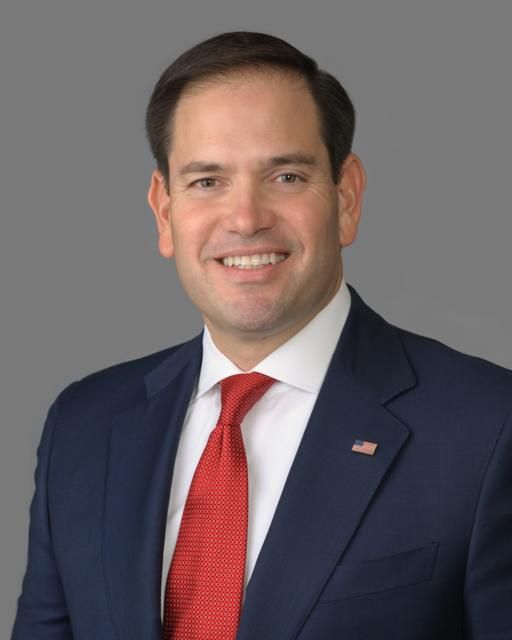
Left or top: Senate Select Committee on Intelligence Chairman Mark Warner (D-VA). Right or bottom: ranking Republican Senator Marco Rubio (R-FL).
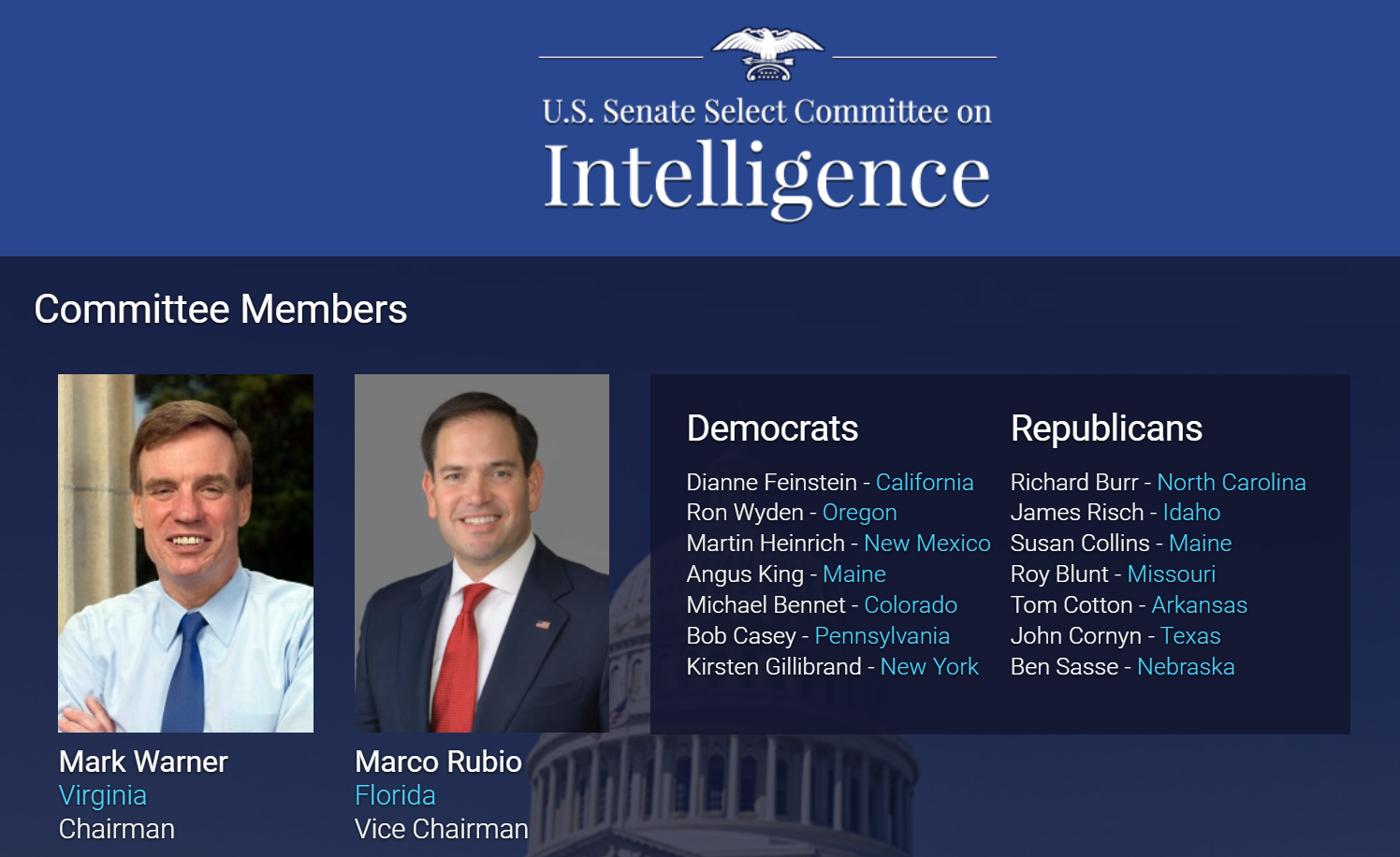
The Senate Armed Services Committee is chaired by Senator Jack Reed (D-RI); the ranking Republican is Senator Jim Inhofe (R-OK).
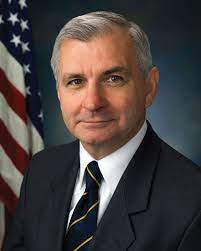
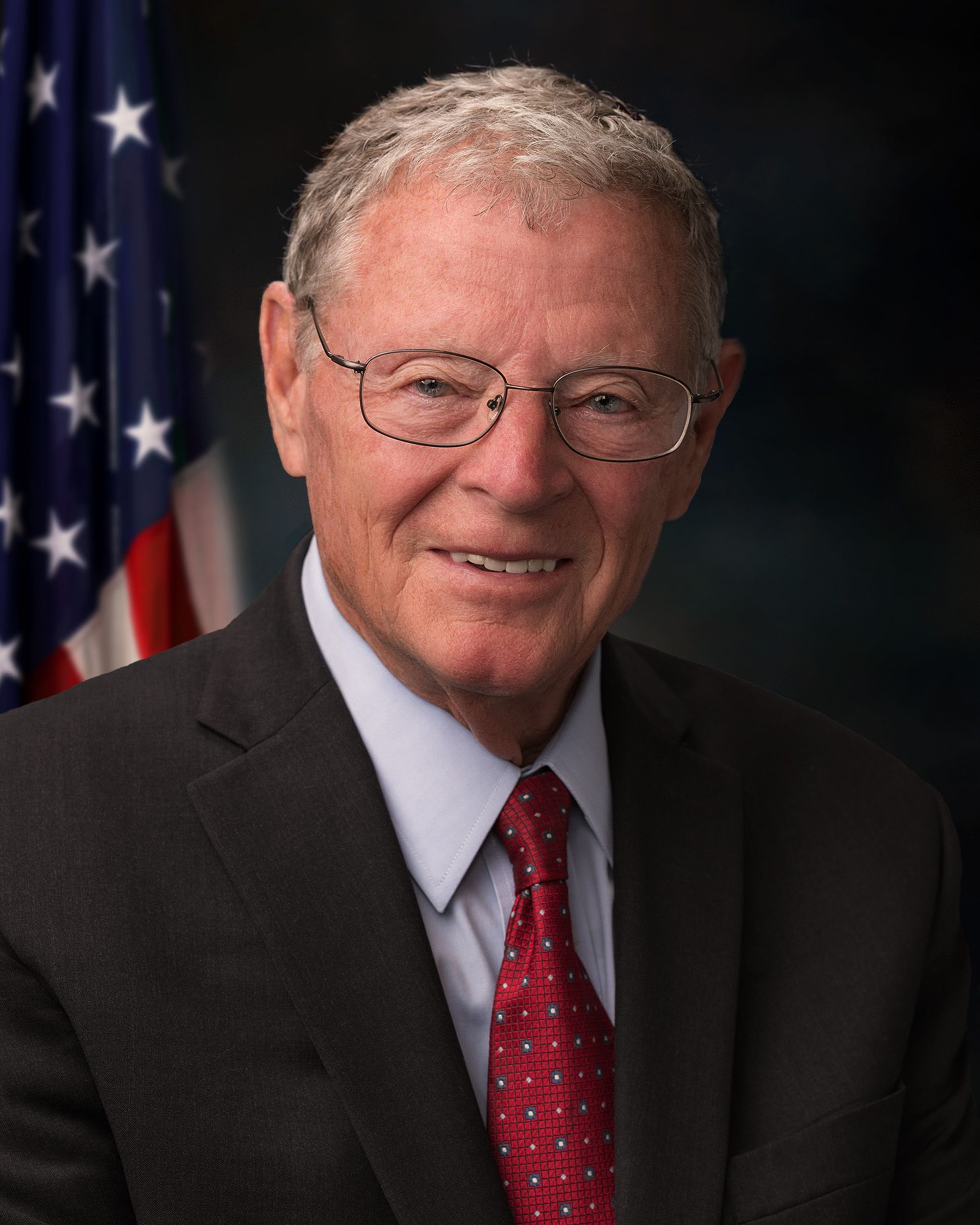
Left or top: Senate Armed Services Committee Chairman Senator Jack Reed (D-RI). Right or bottom: ranking Republican Senator Jim Inhofe (R-OK).
One component in the package, dealing with creation of a "secure system" for government or ex-government employees (including military personnel) and contractors to legally report previously secret UFO data, was already approved by the full U.S. House of Representatives on July 13, 2022, without debate and without a roll call vote, as an amendment to the House version of the Fiscal Year 2023 National Defense Authorization Act (NDAA), H.R. 7900. That amendment was offered by Congressman Mike Gallagher (R-WI) and cosponsored by Congressman Ruben Gallego (D-AZ). Gallagher is a member of the Armed Services Committee, and was recently assigned to the House Permanent Select Committee on Intelligence as well. Gallego is the chairman of the House Armed Services Committee's Subcommittee on Intelligence and Special Operations. H.R. 7900, including the amendment, passed the House on July 14.

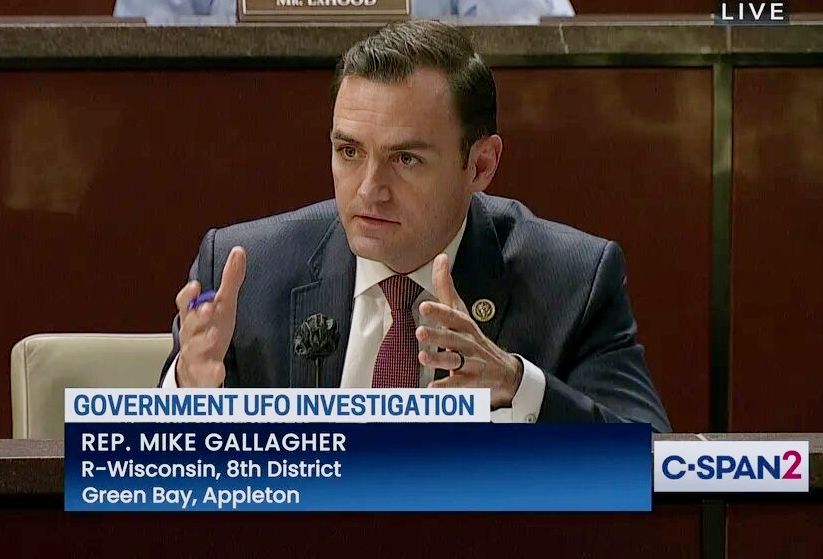
THE TIMELINE FOR FURTHER CONGRESSIONAL ACTION
While the full array of UAP-related provisions is currently found only in the Intelligence Authorization Act, S. 4503, it is likely that the main vehicle for advancing such language will ultimately be the National Defense Authorization Act (NDAA) for Fiscal Year 2023 (the huge authorization/policy bill governing the Department of Defense). The NDAA will probably (but not certainly) be amended to incorporate the entire Intelligence Authorization Act, including the UAP provisions discussed here, although most likely with further refinements.
The NDAA is annually regarded as "must-pass" legislation; Congress has enacted an NDAA for the last 61 years running. Enactment of the Fiscal Year 2023 NDAA could occur before Congress recesses in early October to allow final campaigning before the mid-term election on November 8. However, it is quite possible that the House-Senate conference committee on the NDAA will not be completed until a post-election "lame duck" session. A new Congress convenes on January 3, 2023.
[UPDATE: As of October 11, 2022, the pending business on the U.S. Senate floor was a "manager's amendment" (SA 5499, as modified, to H.R. 7900) that combined the current Senate versions of the National Defense Authorization Act and the Intelligence Authorization Act. The IAA portion (Division F) contains the UAP provisions (with only minor modifications) as originally approved by the Senate Select Committee on Intelligence on June 23, 2022, as discussed in detail in this article. No further formal action will be taken until a congressional post-election ("lame duck") session that begins on November 14. During November and perhaps extending into December, negotiators from the Senate and House will work out a final version of this legislation, including any final agreed-on UAP-related provisions. There is a high degree of assurance that an NDAA-IAA will be signed into law by the end of 2022, as has occurred each year for the past 61 years.]
2021 "GILLIBRAND-RUBIO-GALLEGO" LAW WOULD BE SUBSTANTIALLY BEEFED UP
The new UAP proposals represent a substantial modification of the landmark 2021 UAP law enacted known colloquially as "Gillibrand-Rubio-Gallego" law. (That law was enacted on December 27, 2021, as Section 1683 of the Fiscal Year 2022 NDAA, Public Law 117-81, later codified as 50 U.S.C. § 3373.) I was the first to report in detail on the substantive provisions of that legislation, when the final language emerged from closed-door Senate-House negotiations on December 7, 2021. (See this article.)
As far as I can see, the proposed re-write incorporated into S. 4503 by the Senate Intelligence committee would remove or dilute nothing of substance in the 2021 law. Rather, the congressional drafters – primarily at the SSCI with the concurrence of the Senate Armed Services Committee – propose to modify the 2021 legislative construction in several significant respects. The new proposals underscore the will of Congress that the Department of Defense and all of the intelligence agencies must deal with UAP in a more proactive, coordinated and methodical fashion, and must collaborate with Congress in uncovering and consolidating whatever pertinent data may already exist in government-affiliated programs, archives, or the memories of witnesses and program participants.
"AOIMSG" [NOW "AARO"] WOULD BECOME "UNIDENTIFIED AEROSPACE-UNDERSEA PHENOMENA JOINT PROGRAM OFFICE" (UAP JPO)
The Pentagon UFO office was created administratively on November 23, 2021, through an order issued by Deputy Secretary of Defense Kathleen Hicks. It was to be successor to the UAP Task Force, an entity associated with the Office of Naval Intelligence that studied cases and briefed lawmakers over a period of several years. The Hicks memo saddled the new entity with the forgettable-by-design acronym AOIMSG. That stands for "Airborne Object Identification and Management Synchronization Group," although I joked at the time that it really stood for "An Office Instituted Mainly to Stop Gillibrand," referring to the expansive UAP legislation that was then approaching a crucial juncture in Congress. Despite this effort by the bureaucracy to persuade lawmakers that it already had the UAP matter well in hand, the landmark Gillibrand-Rubio-Gallego law was enacted in December 2021.
Since then, the Pentagon has been slow in "standing up" the new enterprise, which was supposed to be operational by June 2022. In early May 2022, an aide to Senator Kirsten Gillibrand (D-NY), prime Senate sponsor of the 2021 law, told POLITICO's Bryan Bender, "Senator Gillibrand believes that the DoD needs to take this issue much more seriously and get in motion. They have had ample time to implement these important provisions, and they need to show us that they are prepared to address this issue in the long term."
In the same article, Bender quoted an aide to Senator Marco Rubio (R-FL), the lead co-sponsor of the 2021 law, stating, "Rubio is definitely frustrated. They are not moving fast enough, not doing enough, not sharing enough...It is not at the level it needs to be."
[UPDATE: On July 20, 2022, the Pentagon announced that the office organized in accordance with the requirements of the December 2021 Gillibrand-Rubio-Gallego law would now be known as the All-domain Anomaly Resolution Office (AARO). The Pentagon also released memoranda sent to senior Pentagon officials by Deputy Secretary of Defense Kathleen Hicks and Under Secretary of Defense for Intelligence and Security Ronald S. Moultrie, summarizing organizational lines of authority and mission. Note, however, that enactment of all or part of the pending legislative proposals discussed in this article could require the Pentagon to make further adjustments, among these, again changing the name of the office.]
As I reported on May 12, 2022, I believe that the Under Secretary of Defense for Intelligence has picked a highly credentialed government scientist and intelligence officer, Dr. Sean Kirkpatrick, to serve as director of the UAP office. The Pentagon has yet to make any public announcement on that selection, nor has it said much at all about the process of implementing the law. However, in May 17, 2022 testimony before a House Intelligence subcommittee, Under Secretary of Defense for Intelligence & Security Ronald Moultrie, the Pentagon's top intelligence official, said, "We have, as of this week, picked the director for that effort, a very established and accomplished individual....We have worked with personnel across the Department of Defense with the services. And we have worked with the IC...a methodical approach is something that we are doing that has not been done before." Moultrie added, "We are open to all hypotheses. We are open to any conclusions that we might encounter." [UPDATE: In a press release on July 20, 2022, the Pentagon finally confirmed Dr. Kirkpatrick had been picked to head the UAP office. An attached bio of Dr. Kirkpatrick said the request occurred "in early 2022."]
Under the SSCI-reported bill, Congress would rename the UAP office as the Unidentified Aerospace-Undersea Phenomena Joint Program Office (UAP JPO). The director of this office would be appointed by (and report to) the Secretary of Defense, currently Lloyd Austin.
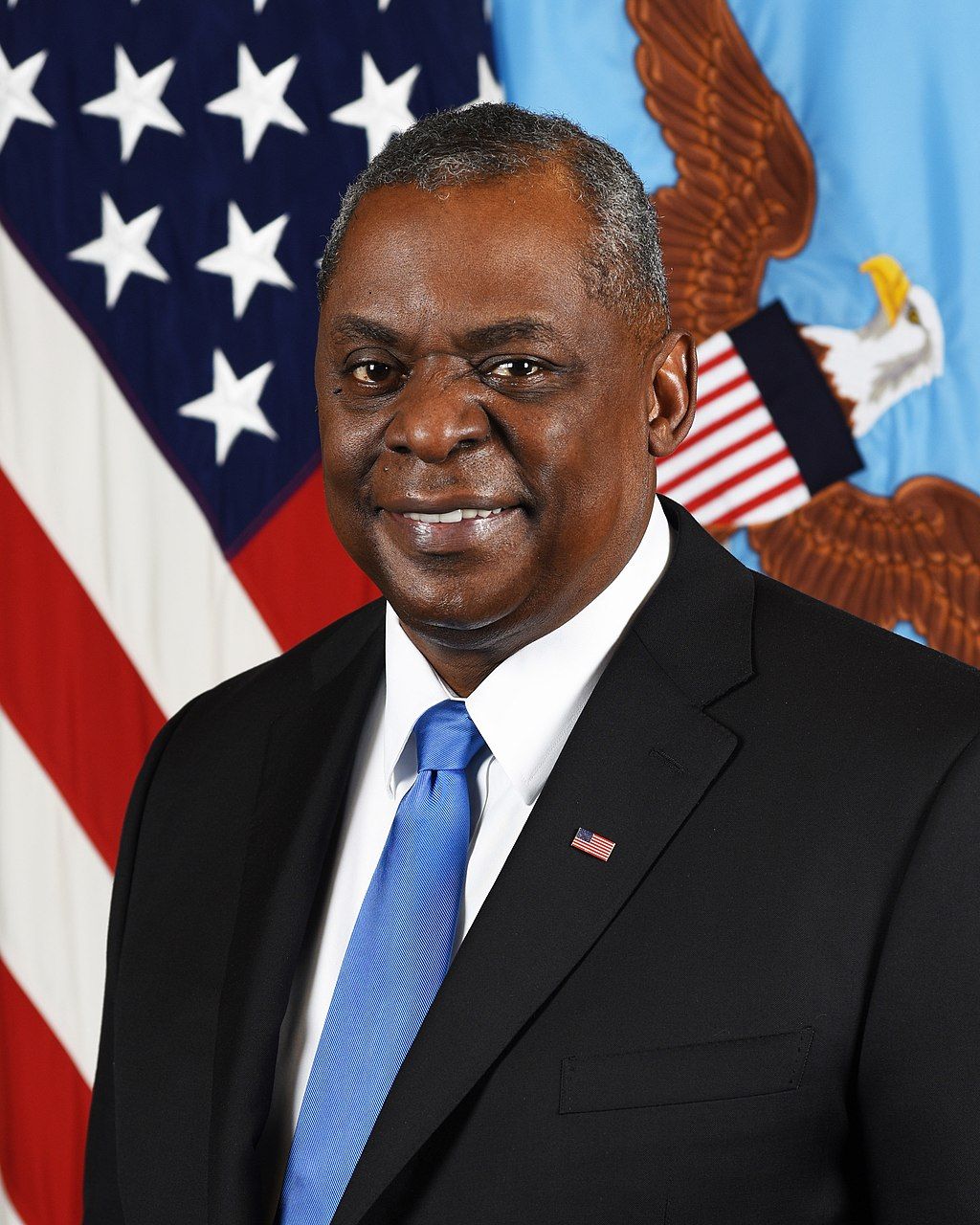
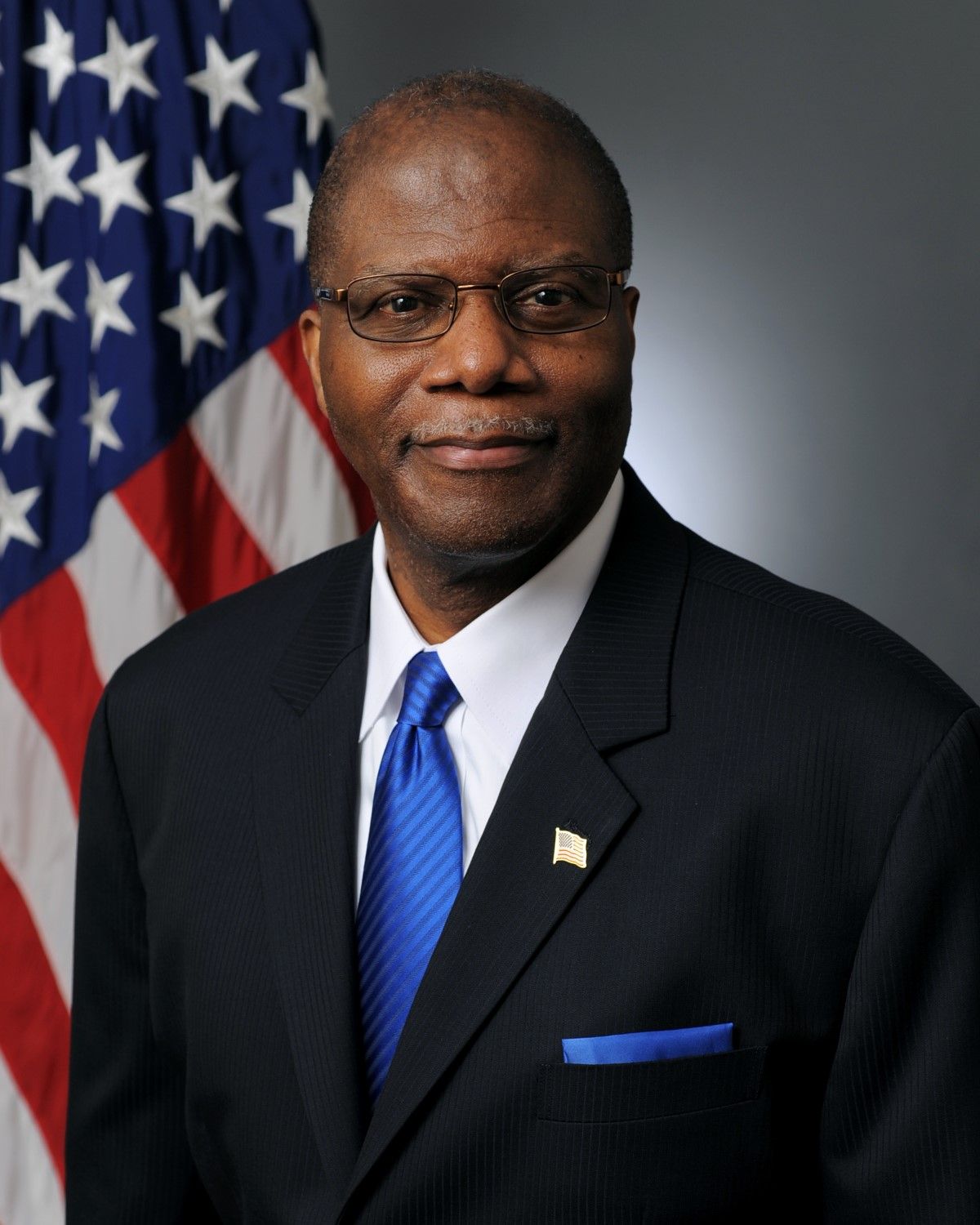
Secretary of Defense Lloyd Austin, on left or top, and Under Secretary of Defense for Intelligence and Security Ronald S. Moultrie.
The bill would create a new statutory position of Deputy Director, who would by appointed by the Director of National Intelligence (DNI), and who would report to both the Secretary of Defense and (on some matters) to the DNI. This is only one of several provisions, as summarized below, that appear designed to pull the DNI and the Intelligence Community into full collaboration with the Department of Defense in the congressionally driven UAP-investigatory enterprise.("Intelligence Community," or IC, is the term used to refer collectively to the 18 U.S. intelligence agencies, which are under the general authority of the Director of National Intelligence, currently Avril Haines.)
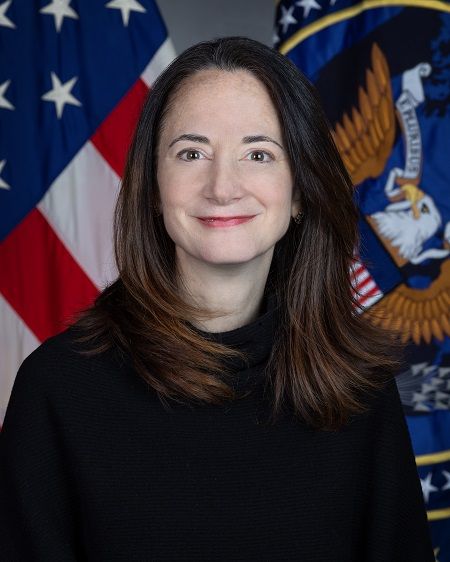
The new proposal would re-enact the 2021 law's requirement that the Secretary and the DNI "shall ensure that each element of the intelligence community with data related to unidentified aerial phenomena makes such data available immediately" to the UAP office.
It bill would also require that within 180 days of enactment, the Secretary of Defense, the DNI, and the UAP office director establish "a core group within the Office that shall include, at a minimum, representatives with all relevant and appropriate security clearances from" the CIA, NSA, Department of Energy, National Reconnaissance Office, Air Force, Space Force, DIA, and the National Geospatial-Intelligence Agency." The bill does not further elaborate on the function or composition of this group.
The bill re-enacts the 2021 requirement that the Secretary of Defense and DNI act to ensure that all elements of the military and the IC share UAP data with the UAP office, and it reiterates the requirement that the DNI produce an annual report on UAP that is to be submitted to Congress in both unclassified and classified form. (The first-ever such reports were submitted on June 25, 2021, in response to an earlier congressional directive.)
The bill would further tighten the screws on the IC by requiring that annually, "each head of an element of the intelligence community shall submit to the congressional defense committees, the congressional intelligence committees, and congressional leadership a report on the activities of the element... undertaken in the past year to support the Office [UAP JPO], including a section prepared by the Office that includes a detailed description of the coordination between the Office and the element of the intelligence community, any concerns with such coordination, and any recommendations for improving such coordination."
Moreover, the UAP JPO director is required to twice annually brief the armed services, intelligence, and appropriations committees on "any instances in which data relating to unidentified aerospace-undersea phenomena was not provided to the Office because of classification restrictions on that data or for any other reason."
[UPDATE (July 26, 2022): On July 20, 2022, the Senate Select Committee on Intelligence approved its explanatory "committee report" on S. 4503 (Report no. 117-132), which was posted online on July 26, 2022. The report contains a short section in which the committee rebukes the Department of Defense for the pace at which the Department has implemented the requirements of the December, 2021 Gillibrand-Rubio-Gallego UAP law.
["At a time when cross-domain transmedium threats to U.S. national security are expanding exponentially, the Committee is disappointed with the slow pace of DoD-led efforts to establish" the UAP in the form mandated by Congress in the 2021 law, the report said. It went on to explain that the further mandates contained in S. 4503 are intended "to accelerate progress." An image of the entire UAP-related section of the report appears below.
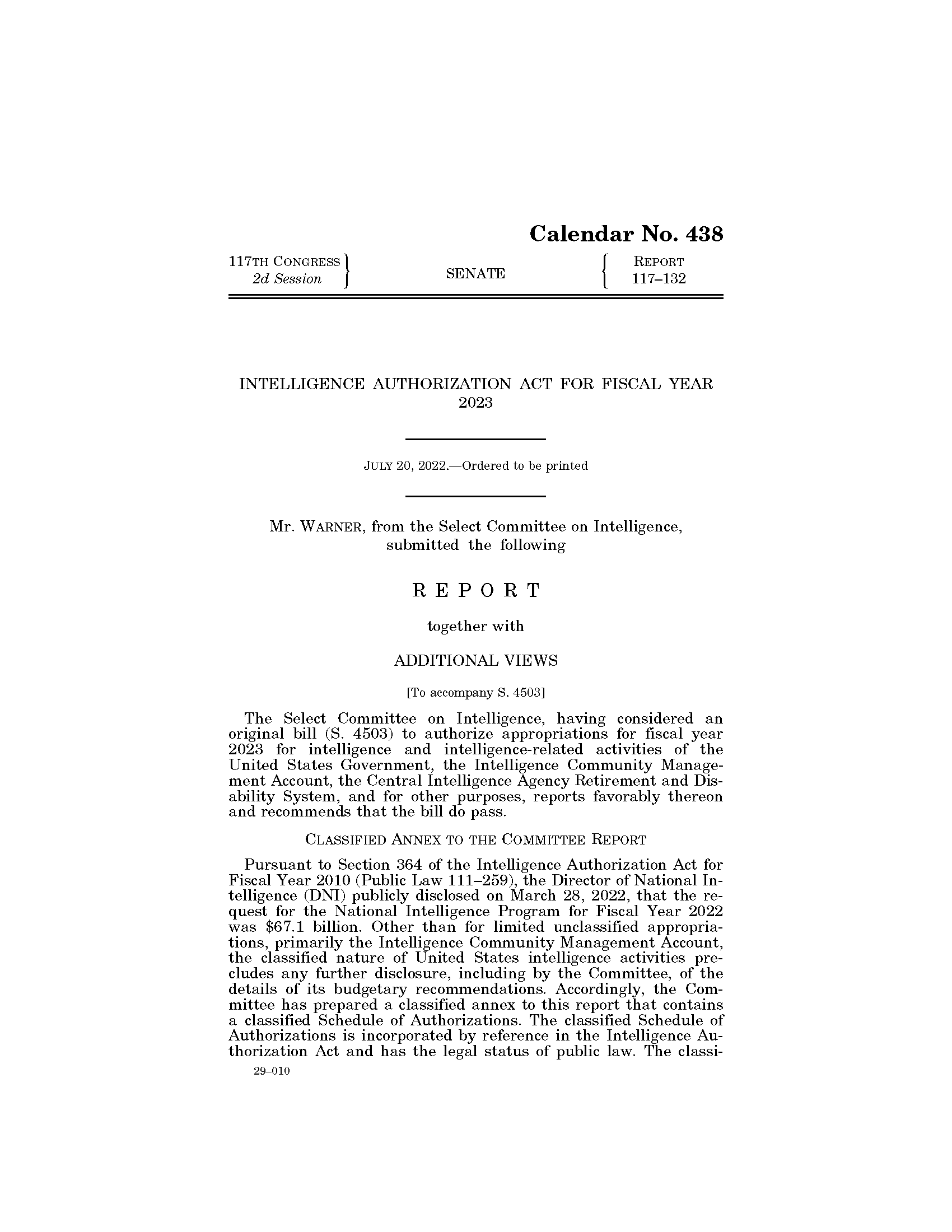

[The July 20, 2022 SSCI committee report also clarified the sponsorship of the various UAP-related provisions found in the SSCI-reported S. 4503. Section 704 ("secure system" for reporting sensitive UAP-related information to the Pentagon office and via that office to Congress) was part of the base bill laid before the committee by the SSCI chairman, Sen. Mark Warner (D-VA), and the ranking Republican, Sen. Marco Rubio (R-FL). Section 703 (upgrading the involvement of the Director of National Intelligence and the Intelligence Community, re-naming the office, etc.) and Section 705 (requiring a GAO historical review back to 1947 on Intelligence Community involvement in UAP matters) were offered as amendments by Senator Roy Blunt (R-MO), co-sponsored by Senator Kirsten Gillibrand (D-NY), Martin Heinrich (D-NM), and Rubio. All of this UAP material was accepted by unanimous consent or on voice votes. Both the final amended bill and the committee report were approved unanimously by the 16-senator committee.]

[The entire SSCI committee report on S. 4503 can be viewed or downloaded from this link:
https://www.congress.gov/congressional-report/117th-congress/senate-report/132/ ]
CREATING A "SECURE SYSTEM" FOR INFORMANT PROTECTION
Anyone who has spent very much time delving into the topic of UAP has probably encountered books, TV shows, or movies depicting tales of secret government-funded UFO projects. Some of the most popular stories allege the existence of long standing government programs to recover and study "crashed" or otherwise acquired non-human craft, and attempts to reverse-engineer the materials or other technologies utilized in such devices. [For more on this, see Appendix A.]
All outward signs suggest that no secret UFO program has ever been reported to the specific small groups of members of Congress who are specifically empowered by statutes to be advised of even highly secret, compartmentalized research and intelligence programs. Still, rumors persist of secret projects or cabals in possession of surprising data. Most such accounts reach the public as hearsay and/or in the words of unnamed sources.
On May 16, 2022, POLITICO published an article by Bryan Bender that included this passage:
"Without forcing peoples’ hand, it is going to be very difficult to uncover legacy ventures and programs that we know about based on oral interviews we dug up,” said a Defense Department official who is involved in the new effort but was not authorized to speak publicly. “There has to be a forcing mechanism. There has to be something to hold people accountable but also give them a chance to come out clean for a period of time,” the official added, noting that in his experience the Pentagon oversight group [AOIMSG] has been “stonewalled.” The official said there are people with knowledge of the phenomena who have yet to contribute to the oversight effort.
In an attempt to find out what may be out there, the legislation would establish what it describes as a "secure system" that would allow (but not require) former or current government employees (including military and IC), and former and current employees of government contractors, to submit UAP-related information to the UAP JPO under a new statutory "shield" that would neutralize any otherwise applicable classification laws or NDAs. These protections would extend to "any event relating to unidentified aerospace-undersea phenomena" and "any Government or Government contractor activity or program related to unidentified aerospace-undersea phenomena."
Under the proposed reporting system, UAP JPO staff with high security clearances would check out incoming reports, and would pass on to the congressional security committees reports of a significant character. The proposal contains a specific exception for reports that reveal information about Special Access Programs (SAPs) and Compartmented Access Programs (CAPs), but only if they have already been reported to the small groups of congressional leaders who are tasked by statute to be notified of such highly protected secrets. It appears that no UFO-related SAPs or CAPs have ever been reported in this fashion. Still, this exception in theory would kick in if, for example, somebody honestly believed that he had once worked on a UFO program, but the UAP JPO learned that it was really a Special Access Program trying to develop a new propulsion method without benefit of any alien tech.
Some may read the secure-system reporting provision to suggest that the key congressional committees have already concluded that bombshell UAP secrets are lurking in various hidden projects or archives, or in the memories of participants in past secret projects. However, my perception is that this is more of an open-minded exploration. If surprising and important new information does come in and reaches lawmakers through the secure system, they will then will have to decide among themselves what to do with it or about it.
"I believe it’s possible that folks may be precluded from being fully transparent with Congress due to their being bound by non-disclosure agreements," Congressman Gallagher, the chief House sponsor of the reporting provision, told POLITICO. "If that’s true, I want to make sure that there’s no technical reason preventing them from speaking to us."
To illustrate the anticipated operation of the secure system, let us consider the purely hypothetical case of an engineer who has spent years working for a defense contractor on some mysterious technological device that apparently once flew, the origins of which are shrouded in secrecy and which seems to be the product of an unknown technology. The engineer would like to bring this inexplicable device to the attention of the new UAP office in the Pentagon and to the members of Congress who are probing the subject, but he fears that he might thereby violate a Non-Disclosure Agreement (NDA) that he signed, and perhaps suffer reprisals from his employer, such as removal of his security clearance. Under the legislation, the engineer's transmission of information through the UAP JPO's secure system could not be regarded as a violation of his NDA or any classification law. Further, the bill would explicitly prohibit government employees or a government contractor from taking any adverse action in retaliation for the engineer's use of the secure system portal. As an added and formidable layer of protection, the bill would authorize any person subjected to job-related reprisals to sue for actual and punitive damages in the U.S. Court of Federal Claims.
So, what happens if the engineer submits his information, and the UAP JPO subsequently informs the security-cleared members of the congressional committees that the engineer's remarkable tale checks out? At this point, things become somewhat murky, with differing interpretations offered even by Capitol Hill observers who closely follow these matters. All agree that in this scenario, the UAP JPO staff and the lawmakers would both have learned something very important for them to know. However, I see nothing in the language of the bill itself that would clearly free the "whistleblower" or the lawmakers to disclose those revelations to the public, whether in open congressional testimony or in public interviews, a book, or otherwise. On its face, the bill provides protection from security violations or job reprisals only with respect to the act of passing the information to the security-cleared individuals who staff the UAP JPO, and the cleared members of Congress and their cleared professional staff members. Under this reading, the now-informed lawmakers would have to put their heads together and decide how to respond to the still-classified information.
Thus, if faced with a surprising revelation that key members of Congress thought should be made public, but military or other Executive Branch officials thought should remain under wraps, the lawmakers might have to seek to pressure or persuade the Executive Branch officials to waive the restrictions, or they might have to resort to new legislative measures.
A potential alternative reading, however, based on seemingly careful wording, is that if the UAP JPO determines that a specific UAP-related secret program – such as the hypothetical government-funded project in possession of a device incorporating unrecognizable materials or functions – was never properly reported to Congress, then all associated NDAs could be deemed non-binding– posing a dilemma that could be resolved by promptly undertaking to formally report the program to Congress.
These issues are quite important because of longstanding underlying disagreements between the branches of government over where constitutional authority resides with respect to official secrets. I am no authority on the subject, but in short, Executive Branch lawyers in administrations of both parties have held the view that the Constitution gives any president intrinsic authority to classify information, and even to disregard statutory reporting requirements in a particular case, if he deems it necessary to protect national security. Most lawmakers probably adhere to the contrary view that the President's classification powers are constrained by binding statutory guardrails, such as the reporting requirements applicable to all significant intelligence information and activities, including Special Access Programs.
To complicate the question further, the security committees of the House and Senate operate under rules that assert independent power for either house of Congress to declassify specified information under certain circumstances. But this authority is controversial and seldom employed, and it appears that when it is invoked, it most often leads to negotiations between the two branches that produce a compromise.
The bill requires the director of the UAP JPO to include "a summary" of the information obtained through the secure reporting system in the annual report on UAP developments to be submitted by the DNI to the congressional intelligence and armed services committees, and to the top congressional leadership of both parties. Those reports are to be submitted in both unclassified and classified form; it is very unclear to what degree any significant information gathered through the secure system might be reflected in the unclassified version of the report.
A year after enactment of the bill, the inspector generals of the Department of Defense and the Intelligence Community would "conduct an assessment of the compliance with the requirements of this section [the secure system] and the operation and efficacy of the system..."
HYPOTHETICAL HIDDEN UFO PROJECTS
At a hearing conducted by a subcommittee of the House Permanent Select Committee on Intelligence on May 17, 2022, Congressman Gallagher asked the Pentagon's top intelligence official, Under Secretary of Defense for Intelligence and Security Moultrie, "Could you describe any other [UAP] initiatives that the DoD or DoD contractors have managed after Project Blue Book ended [in 1969] and prior to AATIP beginning?" [This "AATIP" reference likely meant a short-lived program (2008-2010) funded at the instigation of the late Senator Harry Reid (D-NV) when he was Senate Majority Leader, formally known the Advanced Aerospace Weapon System Applications Project (AAWSAP), but sometimes also referred to as AATIP.]
Moultrie answered that he was "not aware of anything that is official that was done in between those two [programs]...I am not aware of any contractual programs that are focused on anything related to this...I will say no contractual or programmatic efforts that are involved..." However, he added, "I can't speak to what people may be looking at in the Department."
Bray said he was "not aware of anything outside what we are doing in the UAP Task Force" (using the term originally attached to the Navy-originated entity that is being replaced by the statute-created central UFO office).
In the 1980s, Colonel John B. Alexander formed an ad hoc group of employees from a number of federal security agencies who held high security clearances and who were also personally interested in UFOs. Calling themselves the "Advanced Theoretical Physics Project," they went looking for the secret UFO program that they were sure must exist. They could not find one. Alexander wrote in his 2011 book UFOs: Myths, Conspiracies, and Realities: "Worth noting is that even at the most senior levels, some officials shared the conventional mythology of the general population regarding UFOs. Despite their high-level positions, they all seemed to think that someone else was responsible for the topic."
Christopher Mellon, who once held senior Senate staff positions dealing with intelligence programs, and also served as Deputy Assistant Secretary of Defense for Intelligence under President Clinton, told me, "I never saw any UAP programs of any kind at any level of classification in Congress or at DoD."
DOES THE LEGISLATION PROVIDE FOR "AMNESTY"?
The proposed secure system reporting mechanism has been referred to by some commentators as an "amnesty" provision, but the use of that term may cause confusion, since the word conveys the erasure of liability for past criminal activity. The word "amnesty" does not appear in the bill (nor does "immunity"). The provisions appear to be crafted to ensure that nobody violates the classified information statute or an NDA, merely by the act of reporting into the secure system. I see no language in the bill that would waive prosecution for any hypothetical criminal offenses that pre-dated the act of reporting into the secure system.
To illustrate, consider another far-fetched hypothetical: Someone approaches the UAP JPO and says he once worked for a covert Men-in-Black operation that engaged in physical threats, warrantless break-ins, warrantless phone taps, and other crimes, in order to protect some big UFO secrets. He tells the UAP JPO that he is willing to spill the beans if given "immunity." The bill language does not speak to such a case. The Man-in-Black who wants to come in from the cold would not be committing a security offense by reporting into the secure system whatever he knew relating to the UFO program, but that would not wipe away his past criminal acts.
But that does not mean that accommodation would be impossible. While no "amnesty" provisions, properly so called, are found in the bill, there are existing authorities in law by which certain Executive Branch officials, or in some circumstances certain congressional committees, can confer immunity for specific past crimes in order to elicit information or testimony. Also, presidential retroactive pardon power is nearly unlimited. However, unless individuals (whether males dressed in black or otherwise) actually emerge from the mists of ufological legend with convincing claims, I think that such remote possibilities need not detain us further.
[See also Appendix B.]
A MANDATE FOR A COMPILATION OF ALL UAP-RELATED NON-DISCLOSURE AGREEMENTS
The bill also would mandate that the Secretary of Defense, DNI, Secretary of Homeland Security, and heads of any other federal agencies that have supported UAP-related investigations, must "conduct comprehensive searches of all records relating to nondisclosure orders or agreements or other obligations relating to" such events, and must "make the records compiled... accessible to the congressional intelligence committees, the congressional defense committees, and congressional leadership [and] not later than September 30, 2023," and thereafter annually report on such NDAs.
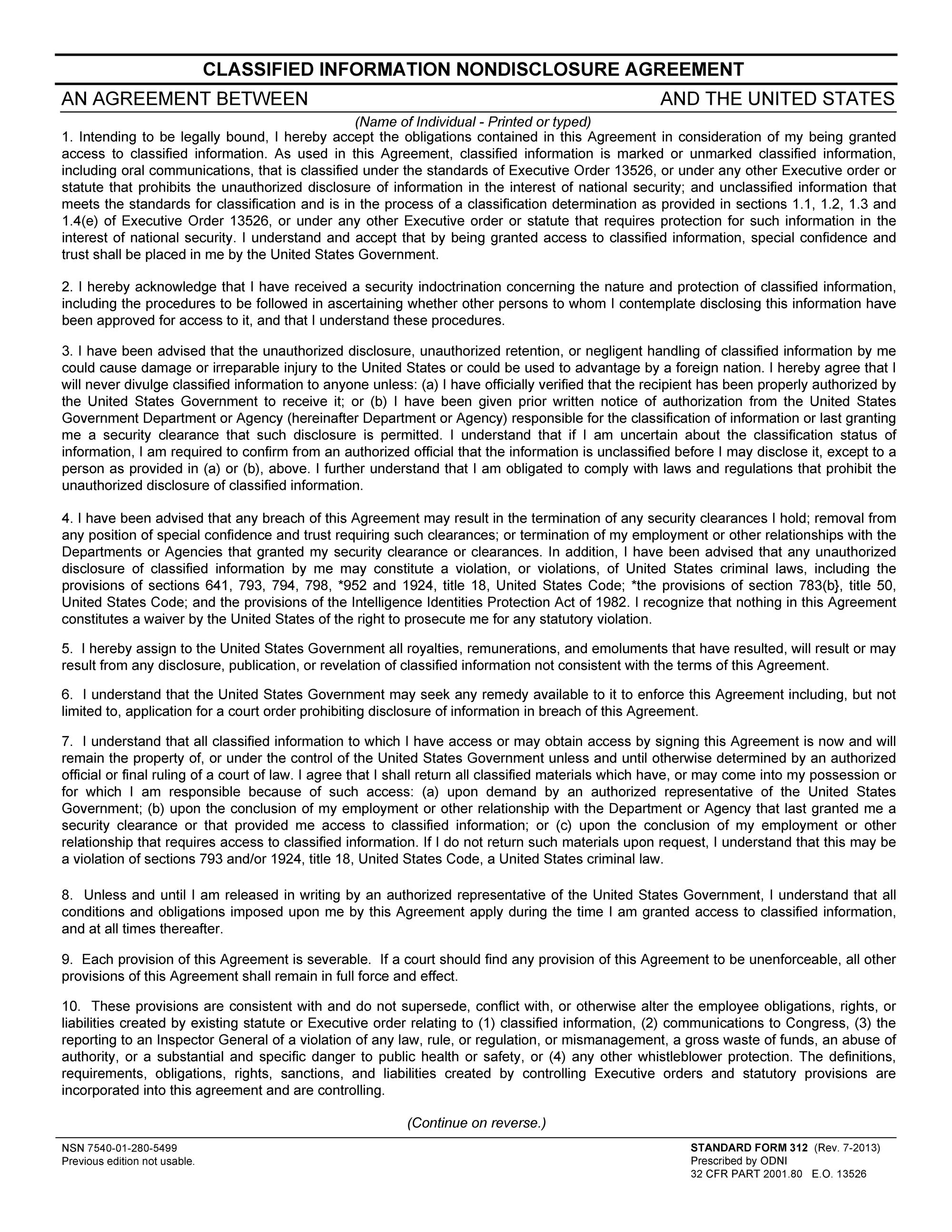
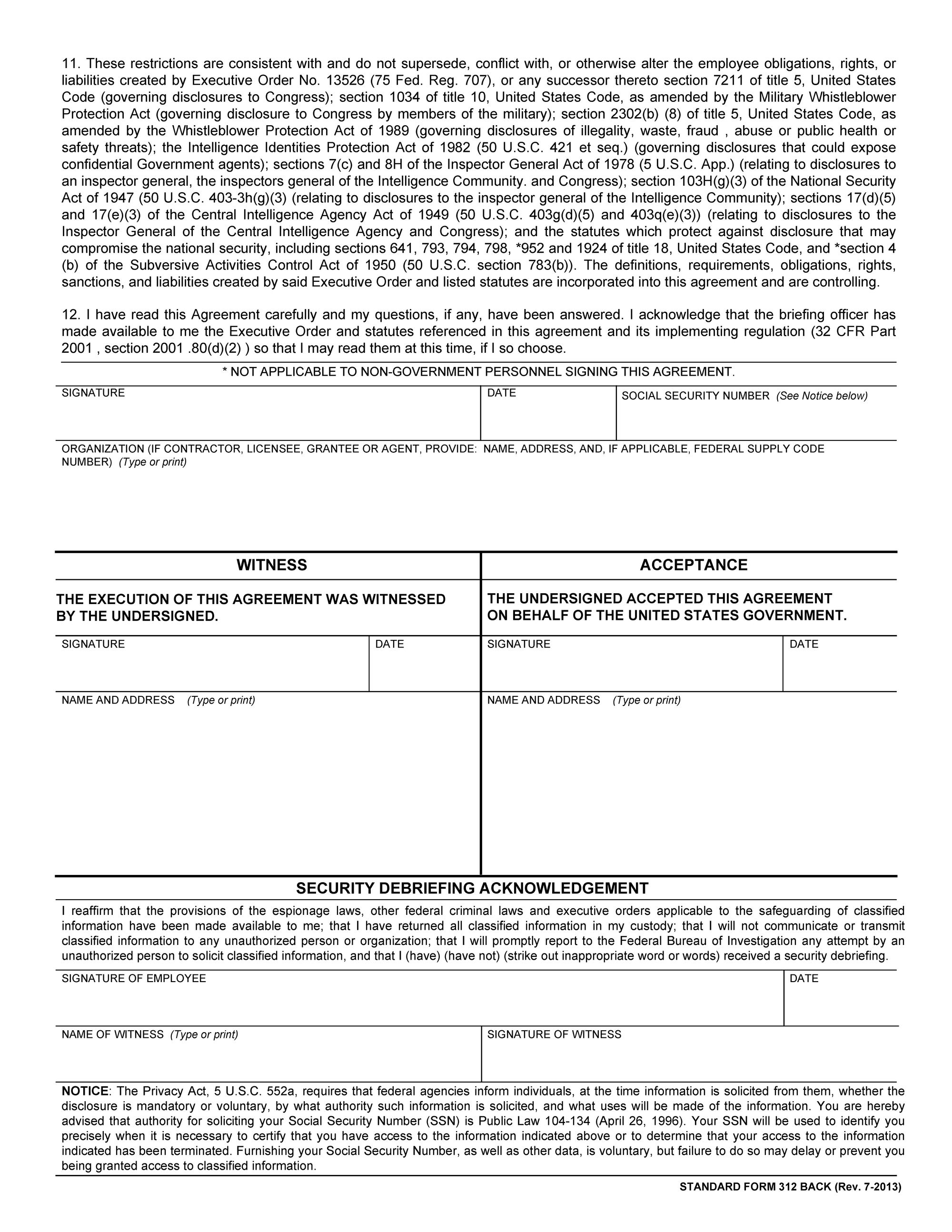
2013 Classified Information Nondisclosure Agreement
HISTORICAL PROBE BY COMPTROLLER / GOVERNMENT ACCOUNTABILITY OFFICE OF UFO DATA BACK TO 1947

The bill (Section 705) would direct the Comptroller of the United States, the head of the Government Accountability Office (GAO), to conduct a far-reaching historical review of U.S. intelligence agencies' involvement in UAP, beginning January 1, 1947.
The GAO describes itself this way: "GAO, often called the 'congressional watchdog,' is an independent, non-partisan agency that works for Congress. GAO examines how taxpayer dollars are spent and provides Congress and federal agencies with objective, non-partisan, fact-based information to help the government save money and work more efficiently." The GAO is headed by the Comptroller General, who is nominated by the President to a single 15-year term, subject to confirmation by the U.S. Senate.
The bill requires that within one year of enactment, the Comptroller must begin a comprehensive effort to produce "a complete historical record of the intelligence community's involvement with unidentified aerospace-undersea phenomena, including successful or unsuccessful efforts to identify and track unidentified aerospace-undersea phenomena, and any intelligence community efforts of obfuscate, manipulate public opinion, hide, or otherwise provide unclassified or classified misinformation about unidentified aerospace-undersea phenomena or related activities..."
The study must include "a review of the records and documents of the intelligence community, oral history interviews, open source analytic analysis, interviews of current and former government officials, classified and unclassified national archives (including those records any third party obtained pursuant to [FOIA]... and such other relevant historical sources as the Comptroller General considers appropriate."
[UPDATE (July 20, 2022): On July 20, 2022, the U.S. House of Representatives Permanent Select Committee on Intelligence (HPSCI) approved its version of the Fiscal Year 2023 Intelligence Authorization Act (H.R. 8367). Section 716 of the bill (found on pages 279-281 of the printed bill) mandates a historical review by GAO, in terms nearly identical to Section 705 of the Senate version of the IAA (S. 4503), as described in this article. However, in the HPSCI-approved version, there is one additional item on the list of things that the GAO must review, this being "efforts to recover or transfer related technologies to United States-based industry or National Laboratories..." For further information on the sorts of things that this might encompass, see the material that appears above under the section heading "Hypothetical Hidden UFO Projects," and the material in Appendix A below.]
The bill provides no deadline for the Comptroller General to complete this comprehensive history and compilation, but does require that within 180 days after he completes it, he must submit a report to Congress, which "shall include citations to the resources relied upon and instructions as to how the resources can be accessed," which report "shall be submitted in unclassified form, but may include a classified annex as necessary."
The provision would further instruct top intelligence officials, including the DNI, the Under Secretary of Defense for Intelligence and Security, and the Director of the UAP JPO, to "fully cooperate with the Comptroller General" on this historical probe.
[See also Appendix C.]
DUTIES OF THE UAP JOINT PROGRAM OFFICE
The proposed new language largely replicates the list of "duties" being assigned to the UFO office that were enacted in the FY 2021 NDAA. However, some new and intriguing language would now introduce the list of duties: "...and such other duties as are required by this section, including those pertaining to “(A) transmedium objects or devices and unidentified aerospace-undersea phenomena; (B) space, atmospheric, and water domains; and (C) currently unknown technology and other domains."
The UAP JPO duties include establishing procedures "to require the timely and consistent reporting of" UAP incidents; "evaluating links between unidentified aerospace-undersea phenomena and adversarial foreign governments, other foreign governments, or nonstate actors"; and coordinating with other federal agencies including the FAA, NASA, NOAA, the Department of Homeland Security, and the Department of Energy. The National Science Foundation would be added to the 2021 list.
The bill would add one new duty: "(9) Ensuring that appropriate elements of the intelligence community receive all reports received by the Office regarding a temporary nonattributed object or an object that is positively identified as man-made, including a procedure that the Office refers such reports to an appropriate element of the intelligence community for distribution among other relevant elements of the intelligence community..."
The bill largely preserves the overall organizational arrangement created by the 2021 law, under which the Pentagon determines where to place the UAP office on its organizational chart. As I explained in detail in my December 7, 2021 article, it has been placed within the large bureaucratic empire of the Under Secretary of Defense for Intelligence & Security (currently, Ronald Moultrie), the highest-ranking intelligence official in the Department of Defense, and there is nothing in the bill that would change that.
While the central office (UAP JPO) would exercise oversight authority and play a coordinating function, the bill reiterates that the Secretary of Defense and DNI must designate "line organizations" – that is, major military and/or IC components – to conduct the operational aspects of UAP investigations.
For example, subsection (d) requires the Secretary of Defense, "in coordination with" the DNI, to designate one or more line organization in the military and IC "that possess appropriate expertise, authorities, accesses, data, systems, platforms, and capacities to rapidly response to, and conduct field investigations of, incidents involving unidentified aerospace-undersea phenomena under the direction of the Director of the Office...[the Secretary and DNI shall ensure that these organization have] adequate personnel with the requisite expertise, equipment, transportation and other resources necessary to respond rapidly to incidents or patterns of observations involving unidentified aerospace-under phenomena of which the Office becomes aware."
Likewise, subsection (e) requires designation of one or more line organizations that will be "primarily responsible for scientific, technical, and operational analysis of data gathered by field investigations," including "testing of materials, medical studies, and development of theoretical models..."
Subsection (g) requires the director of the UAP JPO to supervise development of a "science plan to develop and test, as practicable, scientific theories to account for characteristics and performance of unidentified aerial phenomena that exceed the known state of the art in science or technology, including in the areas of propulsion, aerodynamic control, signatures, structures, materials, sensors, countermeasures, weapons, electronics, and power generation," and to try "to replicate any such advanced characteristics and performance; and provide the foundation for potential future investments to replicate any such advanced characteristics and technology."
REPORTS AND BRIEFINGS
The bill requires an array of UAP-related reports and briefings, and resets the due dates for some of these. Of greatest interest to most readers would be the annual reports to be submitted to Congress, in unclassified and classified form, by the Director of National Intelligence, following up on the sketchy but widely noted "Preliminary Assessment" issued on June 25, 2021.
Under the December 2021 law, the next annual report is due October 31 2022, and presumably will be delivered, unless the proposed rewrite is enacted before that date and resets the clock. S. 4503, Section 703(j) would require a DNI unclassified/classified report "no later than 180 days after" the bill's enactment date.
The bill retains a list of subjects that the annual reports must address, which differs little from those spelled out in the December 2021 law. The mandatory categories include "any efforts underway on the ability to capture or exploit discovered unidentified aerial phenomena," "an assessment of any health-related effects for individuals that have encountered unidentified aerial phenomena," and descriptions of UAP incidents associated with nuclear weapons, nuclear-powered craft, and domestic nuclear power facilities.
The bill currently contains two different provisions requiring closed briefings of certain congressional committees by the director of the UAP JPO. One provision requires that these occur twice a year, the other quarterly. Both provisions seem to require updates on recently received UAP reports and on the operations of the UAP JPO, and it is not immediately evident why two overlapping briefing schedules would be deemed necessary or advisable. At least twice a year, the director must inform the committees of "any instances in which data relating to [UAP] was not provided to the Office because of classification restrictions on that data or for any other reason."
FUNDING
Policy bills such as the NDAA and the IAA do not actually appropriate money – they "authorize" funds to be appropriated for specific purposes. S. 4503 would again authorize the appropriation of "such sums as may be necessary to carry out the work of the [UAP office]... including with respect to (1) general intelligence gathering and intelligence analysis; and (2) strategic defense, space defense, defense of controlled air space, defense of ground, air, or naval assets, and related purposes."
The actual appropriations are determined by the House and Senate Appropriations Committees, in bills developed in their Defense subcommittees. For intelligence-related programs and some defense programs, however, the dollar figures are classified by both the authorizing and appropriating committees. Because the UAP JPO and many of the UAP-related activities described in the bill are intelligence-related, the funding levels for those activities will not be made public.
It is noteworthy, however, that an article by veteran UFO-savvy journalist Billy Cox (June 13, 2022) quoted Dr. Travis Taylor as stating, "I've heard they've authorized something like $50-$60 million for this AOIMSG." Taylor served as a part-time scientific consultant to the UAP Task Force, the predecessor to the AOIMSG. I suspect that his information regarding the authorized funding level is not too far off the mark.
APPENDIXES
A. UFO "Recovery" and Reverse-Engineering Stories
This report on newly revealed legislative language is not the place to get into an extended discussion of decades of stories about purported UFO "crashes," tales of top-secret reverse-engineering projects, and the like. But a little must be said for the benefit of readers who may be encountering this subject for the first time.
First, such stories are something of a cottage industry, at least in the United States. In 2019, I listened to an interview with an apparently serious-minded UFO writer who had spent years assembling a collection of 119 such ostensible "retrieval" cases in the U.S. alone, beginning in the 1940s. He made a remark to the effect that the large number of such reports meant "you can bank on" there really being a government UFO-retrieval program. Yet to entertain the possibility that even a fraction of those 119 cases actually occurred, one would have to postulate that other-worldly visitors are remarkably incompetent at constructing and operating their craft, while generations of mysterious government actors have been ultra-competent in keeping "crash recovery" and reverse-engineering projects hidden.

Among the best known of the captive-spacecraft tales are those of Bob Lazar. This is an easy case: Lazar was a serial prevaricator, con artist, and felon. Holding only a high-school diploma, he falsely claimed to hold two advanced degrees and to be a scientist. He also claimed to have held a security clearance "38 levels above 'Q' clearance, which is the highest civilian clearance," and to have worked briefly in 1988 as "senior scientist" at a top-secret government program at Area 51, studying nine intact alien spacecraft.
Among Lazar's innumerable discredited and/or unsubstantiated tales was his claim to have personal possession of a sample of an alien-created gravity-defeating, spaceship-powering isotope unknown to human science – a substance that for 33 years Lazar has found nonsensical excuses to not turn over to independent labs for forensic analysis. Lazar's unwillingness to produce his purportedly undeniable proof of alien visitation has not deterred his chief promoters, broadcaster George Knapp and filmmaker Jeremy Corbell, from polishing up and promoting carefully edited versions of Lazar's tales to audiences numbering in the millions -- for example, in their lucrative 2018 film Bob Lazar: Area 51 & Flying Saucers.
In recent years, another much-discussed story is found in a document purporting to be notes written by Eric Davis, an astrophysicist and UFO investigator who has long worked on various federally funded projects. The ostensible notes recount a supposed October 2002 meeting between Davis and Admiral Thomas Wilson, then recently retired as director of the Defense Intelligence Agency (DIA). In the recounted conversation, "Wilson" confides to "Davis" the details of a 1997 encounter with defense-contractor gatekeepers for an ultra-secret project, involving study of "an intact craft they believed could fly" that they thought to be "technology that was not of this Earth -- not made by man -- not by human hands." As the story goes, the gatekeepers said that the project had failed to unlock the secrets of the device or to restore its function despite "years and years" of government-funded efforts.
Wilson has publicly denied that any such meeting occurred or that he has knowledge of any such UFO program. Some of Wilson's professional associates from that era also deny ever having heard of such a thing. Davis has neither publicly acknowledged nor denied writing the notes. No other witness has come forth to corroborate either the meeting or the purported secret program, to my knowledge. A number of very substantial questions have been raised about the coherence and plausibility of the narrative set forth in the document.
At a May 17, 2022 House intelligence subcommittee hearing on UAP, Congressman Mike Gallagher (R-WI) asked Under Secretary of Defense for Intelligence and Security Ronald Moultrie and Deputy Director of Naval Intelligence Scott Bray about the "Davis-Wilson" document. Both officials said they were not familiar with it. Gallagher said that he was not endorsing the document's authenticity ("I am not commenting on veracity"), but he requested consent to place the document into the hearing record. The request was granted, as such requests routinely are, but that does nothing to authenticate the story, nor does it mean that any further investigation of the tale will necessarily ensue.
Some interesting stories that are not nearly as widely known have more substantial provenance. For example, in his 2021 book In Plain Sight, Australian journalist Ross Coulthart wrote of interviews he conducted with Nat Kobitz, identified as the one-time Director of Science and Technology for the U.S. Navy. Coulthart said when he asked Kobitz if he'd ever been "read into any programs involving crashed UFOs or UAPs?," Kobitz replied in the affirmative, but also said, "I have only hearsay information...that we had recovered, several times, alien spacecraft. Or what was thought to be."
Kobitz also told Coulthart that after he left the Navy in 1994, he set up a private consultancy, specializing in electron beam welding. In that capacity, he was once invited to Wright-Patterson Air Force Base to examine a mysterious piece of metal, which he compared to "a bulkhead," about three feet by four feet, that was bonded in a seamless manner that Kobitz, although an expert, could not understand. Kobitz told Coulthart that he reserved judgment as to whether that artifact was of non-human manufacture. Kobitz died on April 5, 2020.
B. "Right to Report" provision
The proposed "secure system" for reporting sensitive UAP-related information, if enacted, would strongly reinforce the component of the 2021 UAP law that I labeled the "right to report" provision. That provision (which S. 4503 would retain) required establishment of mechanisms by which military and civilian personnel associated with the military or the Intelligence Community, including contractor personnel, can report UAP-related events, "including adverse physiological effects," directly to the UAP office, without recourse to the chain of command.
This "right to report" provision was intended to curb the stigma and fear of ridicule or disapproval from superiors that had long inhibited pilots and other military personnel from reporting UAP encounters, and that in some cases may have prevented even extraordinary encounters from being passed up the chain of command.
C. Department of Defense Inspector General Evaluation
On May 3, 2021, the Office of the Inspector General of the Department of Defense announced that it was launching an "evaluation... to determine the extent to which the DoD has taken actions regarding Unidentified Aerial Phenomena (UAP)." John Greenewald, Jr. of TheBlackVault.com subsequently obtained via FOIA redacted slides used by the DoD IG's office in launching the evaluation, and later some related emails, but little else has been revealed publicly regarding the scope, depth, or duration of the evaluation – all of which will be determined internally by the DoD IG and his staff. In contrast, the GAO is an instrument of the legislative branch, and Congress can, through legislation such as S. 4503, describe exactly the scope and manner of the deep-dive that it wants into UAP.
SUBSTANTIVE REVISIONS SINCE THIS ARTICLE WAS ORIGINALLY PUBLISHED ON JULY 14, 2022
- July 20, 2022: Added paragraph noting approval of Intelligence Authorization Act version (H.R. 8367) by House of Representatives Permanent Select Committee on Intelligence (HPSCI) on July 12, 2022, including a provision required GAO to review historical record of IC involvement; similar to Section 705 of S. 4503, but with an additional clause referring to "efforts to recover or transfer" UAP technologies.
- July 26, 2022: Added material from the explanatory committee report of the Senate Select Committee on Intelligence (SSCI) on its Intelligence Authorization Act, S. 4503. The SSCI approved the bill on June 22, 2022, and it was posted online of July 14, 2022. The SSCI approved the committee report (no. 117-132) on July 20, 2022, and was posted online on July 26, 2022.
- July 31, 2022: In the section "Reports and Briefings," clarified that the date of the next unclassified report on UAP from the Director of National Intelligence is October 31, 2022, but language in the SSCI-reported S. 4503, if enacted before that date, would postpone the deadline to 180 days after the date of enactment.
- September 13, 2022: In the section "The Timeline for Further Congressional Action," changed estimated date of start of pre-election congressional recess to "early October," and corrected date of election to November 8, 2022. A "lame-duck" session would be legislative work days conducted after the election but before the constitutionally dictated end of the 117th Congress, which is at Noon on January 3, 2023. Such a session includes participation by lawmakers who are retiring or who have been defeated for re-election, but whose terms have not yet expired.
- September 30, 2022: In the section "The Timeline for Further Congressional Action," added a paragraph about a congressional recess that begins on September 29-30, 2022, and extends until the beginning of a post-election "lame duck" session on November 14, 2022. The new paragraph explains that under the terms of an unusual agreement adopted in the Senate on September 29, the NDAA and IAA might be combined into a single bill even during this recess, which would advance the UAP-related provisions several steps in the legislative process.
- October 11, 2022: In the section "The Timeline for Further Congressional Action," updated to reflect action by the Senate on October 11, combining the NDAA and the IAA (including the SSCI-approved UAP provisions discussed in this article, with only minor modifications). This sets the stage for further congressional action during a post-election ("lame duck") session, set to begin November 14, 2022. Senate and House negotiators will work out a final version of the NDAA-IAA legislation, including any final agreed-on UAP language, with enactment to follow before the end of the year.
- Corrected typo: In one reference, the date of SSCI markup (voting session) appeared as "July 20, 2002" instead of the correct "July 20, 2022."
- June 23, 2024: I added Senator Marco Rubio (R-FL) to list of senators who co-sponsored two UAP-related amendments to the draft FY 2023 Intelligence Authorization Act that were offered by Senator Roy Blunt (R-FL) at a closed-door voting session (mark up) held by the Senate Select Committee on Intelligence on June 22, 2022. I had mentioned Rubio in connection with UAP-related language that was incorporated into the base bill that was being amended, but inadvertently omitted his name as a co-sponsor of the two additional provisions offered by Senator Blunt.
My gmail address is my full name, Douglas Dean Johnson, with periods on each side of my middle name.